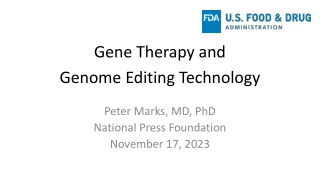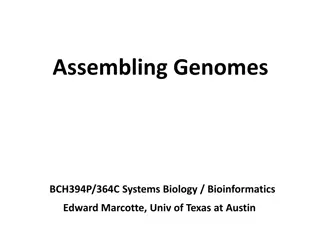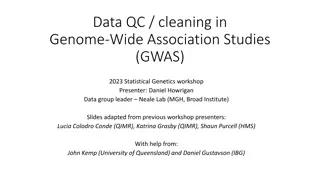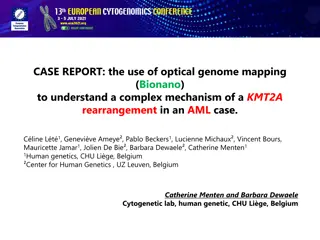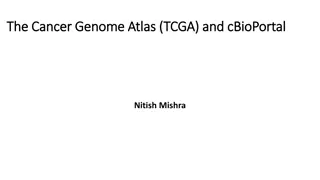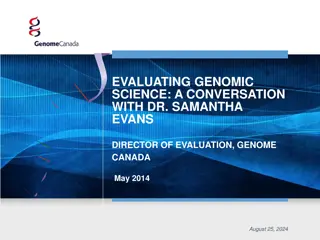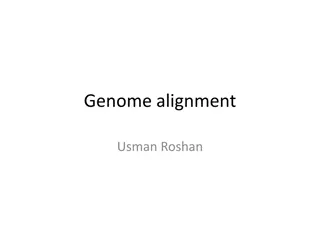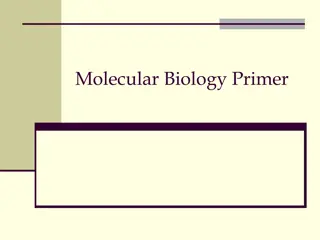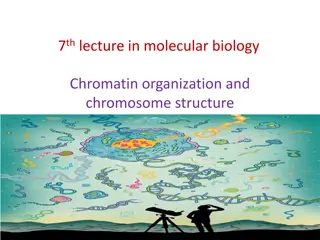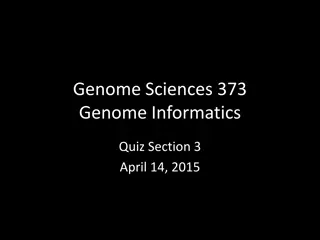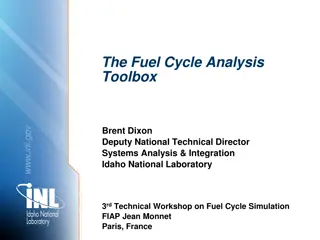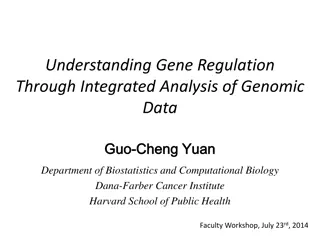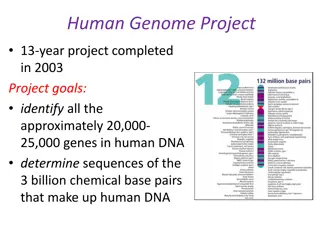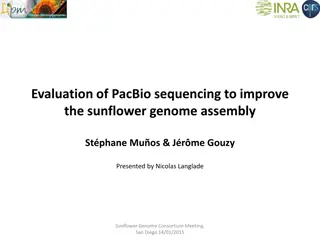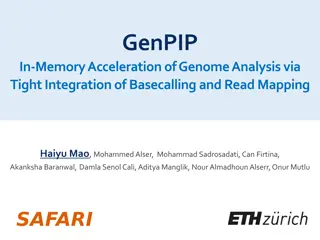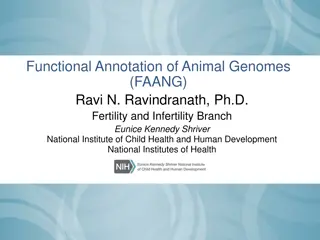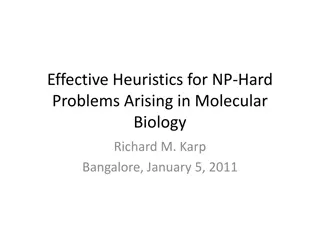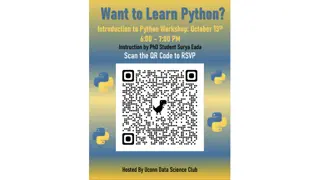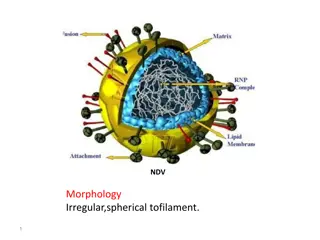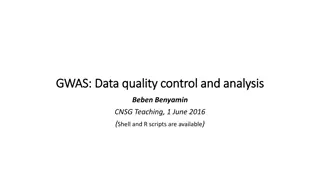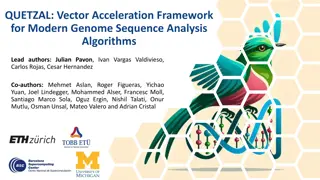Genome Structure and Analysis Tools
In genome sequencing, determining genome structure characteristics like size, repetitive elements, and heterozygosity rate is crucial for evolution studies, quality control, and variant mapping. Tools like Trimmomatic, Jellyfish & Genomescope aid in data filtration, read trimming, and k-mer counting for genome analysis.
Download Presentation

Please find below an Image/Link to download the presentation.
The content on the website is provided AS IS for your information and personal use only. It may not be sold, licensed, or shared on other websites without obtaining consent from the author.If you encounter any issues during the download, it is possible that the publisher has removed the file from their server.
You are allowed to download the files provided on this website for personal or commercial use, subject to the condition that they are used lawfully. All files are the property of their respective owners.
The content on the website is provided AS IS for your information and personal use only. It may not be sold, licensed, or shared on other websites without obtaining consent from the author.
E N D
Presentation Transcript
Assembly of NGS Jiantao Hu
Data Filtration (or mapping)
Trimmomatic A flexible read trimming tool for Illumina NGS data To remove the adaptor or control the quality of reads works with either uncompressed or gzipp'ed FASTQ. Use of gzip format is determined based on the .gz extension. single-ended data, one input and one output file are specified, plus the processing steps. Paired-end data, two input files are specified, and 4 output files, 2 for the 'paired' output where both reads survived the processing, and 2 for corresponding 'unpaired' output where a read survived, but the partner read did not.
The current trimming steps are: ILLUMINACLIP: Cut adapter and other illumina-specific sequences from the read. SLIDINGWINDOW: Perform a sliding window trimming, cutting once the average quality within the window falls below a threshold. LEADING: Cut bases off the start of a read, if below a threshold quality TRAILING: Cut bases off the end of a read, if below a threshold quality CROP: Cut the read to a specified length HEADCROP: Cut the specified number of bases from the start of the read MINLEN: Drop the read if it is below a specified length TOPHRED33: Convert quality scores to Phred-33 TOPHRED64: Convert quality scores to Phred-64 #trimmomatic SE -phred33 input.fq.gz output.fq.gz ILLUMINACLIP:TruSeq3-SE:2:30:10 LEADING:3 TRAILING:3 SLIDINGWINDOW:4:15 MINLEN:36 #trimmomatic PE input_forward.fq input_reverse.fq output_forward_paired.fq.gz output_forward_unpaired.fq.gz output_reverse_paired.fq.gz output_reverse_unpaired.fq.gz ILLUMINACLIP:TruSeq3 - PE.fa:2:30:10 LEADING:3 TRAILING:3 SLIDINGWINDOW:4:15 MINLEN:36
Jellyfish & Genomescope A tool for fast, memory-efficient counting of k-mers in DNA. A k-mer is a substring of length k, and counting the occurrences of all such substrings is a central step in many analyses of DNA sequence. FASTA and multi-FASTA files containing DNA sequences GenomeScope can infer the global properties of a genome from unassembled sequenced data. GenomeScope uses the k-mer count distribution from Jellyfish.
Why? One of the first goals when sequencing a new species is determining the overall characteristics of the genome structure, including the genome size, abundance of repetitive elements, and the rate of heterozygosity. These features are needed to study trends in genome evolution, and can inform the parameters that should be used for the individual assembly steps. They can also serve as an independent quality control during any analysis, such as quantifying the quality of an assembly, or measuring the expected number of heterozygous bases in the genome before mapping any variants.
#jellyfish count -m 21 -s 20G -t 20 -o 21mer_out -C <(filename_1.fq.gz) <(filename_2.fq.gz) #jellyfish histo -o 21mer_out.histo 21mer_out #genomescope.R i filename.hist -o output_p3 -k 21 -p 3 -n 21.p3
Assembly of NGS sequencing data De novo assembly
de Bruijn graph (Basic method) First step, the sequence reads are fragmented into smaller pieces called k-mers. Sequence read AGCTGTAAGACTGTC AGCTGTA GCTGTAA CTGTAAG TGTAAGA GTAAGAC TAAGACT AAGACTG k-mers k=7 AGACTGT GACTGTC
De Bruijn Graph >seq1 TTCTAAGT >seq2 CGATTCTA CG A TT C TC T CT A TA A AG T GA T AT T AA G
De Bruijn Graph >seq1 >seq3 TTCTAAGT CGATTGTAAGT >seq2 CGATTCTA CG GA AT TT C TC T CT A TA A AA AG T T AG CG A A GA T T AT T T AA G G TT G TG T GT A
De Bruijn Graph >seq1 >seq3 TTCTAAGT CGATTGTAAGT >seq2 CGATTCTA TT C TC T CT A TA A AG T CG A GA T AT T AA G TT G TG T GT A
tip low coverage links bubble error/delete tiny repeat bubble/merge
SOAP(Short Oligonucleotide Alignment Program)denovo SOAPdenovo-SOAPdenovo is a novel short-read assembly method that can build a de novo draft assembly for human- sized genomes. The program is specially designed to assemble illumina short reads. It creates new opportunities for building reference sequences and carrying out accurate analyses of unexplored genomes in a cost effective way. Download Link: http://soap.genomics.org.cn/soapdenovo.html
De Bruijn graph construction the 25-mer provided the best tradeoff Tip removal Solving tiny repeats Merging bubbles
Contig linkage graph Used the number of read pairs between two contigs to weight the linkage, and used the read paired-end insert sizes to estimate the gap size between the two contigs. Scaffolding 1.subgraph linearization: The compatible transitive lineages among a group of contigs were removed and the contigs were merged into one node with carefully estimated internal gap sizes. 2.repeat masking: If a contig has multiple incoming and outgoing linkages to the other contigs, but the linkages are not compatible, this contig is a repeat. The repeat contigs, together with their linkages, were masked during scaffolding.
how to use it Once the configuration file is available, a typical way to run the assembler is: User can also choose to run the assembly process step by step as: #./soapdenovo all -s config_file -K 25 -R -o graph_prefix #./soapdenovo pregraph -s config_file -K 25 [-R -d -p] -o graph_prefix #./soapdenovo contig -g graph_prefix [-R -M 1 -D] #./soapdenovo map -s config_file -g graph_prefix [-p] #./soapdenovo scaff -g graph_prefix [-F -u -G -p]
Supernova Supernova is a software package for de novo assembly from Chromium Linked- Reads that are made from a single whole-genome library from an individual DNA source. A key feature of Supernova is that it creates diploid assemblies, thus separately representing maternal and paternal chromosomes over very long distances. Almost all other methods instead merge homologous chromosomes into single incorrect 'consensus' sequences. Supernova is the only practical method for creating diploid assemblies of large genomes. Use 10X genomics sequence Information Link: https://omictools.com/supernova-tool https://support.10xgenomics.com/de-novo-assembly/software/overview
supernova run takes FASTQ files containing barcoded reads from supernova mkfastq and builds a graph- based assembly. The approach is to first build an assembly using read kmers (K = 48), then resolve this assembly using read pairs (to K = 200), then use barcodes to effectively resolve this assembly to K 100,000. The final step pulls apart homologous chromosomes into phase blocks, which are often several megabases in length. supernova mkoutput takes Supernova's graph-based assemblies and produces several styles of FASTA suitable for downstream processing and analysis.
A Supernova assembly can separate homologous chromosomes over long distances, in this sense capturing the true biology of a diploid genome
Representation of Supernova assemblies as FASTA. Several styles are depicted.
Basic Command Line #supernova run filename.fastq -maxreaads=40000000 -localcores=50 #supernova mkoutput -asmdir=assembly -outprefix= sample_out -style=raw or -style=megabubble or -style=pesudohap or -style=pesudohap2


